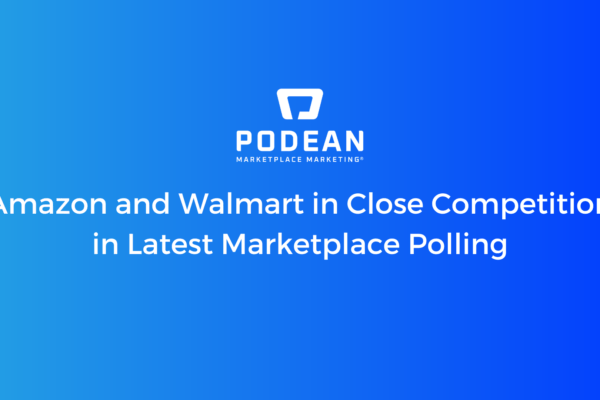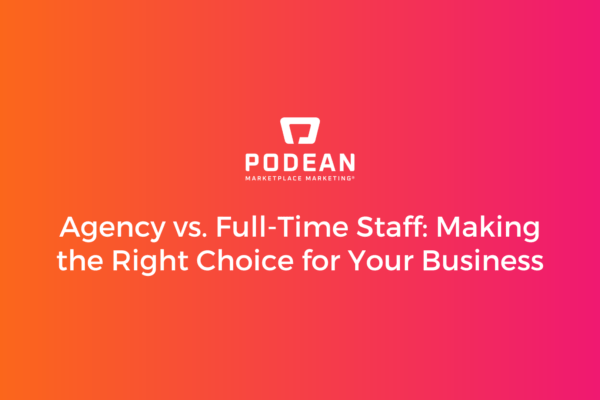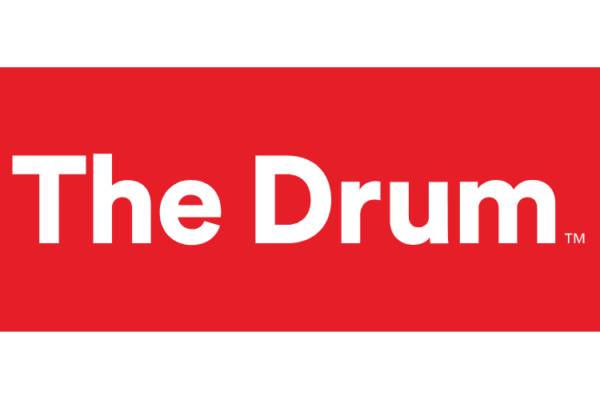Categories
Latest Posts

Skai Director of Sales joins Podean as Director of Retail Media Partnerships
September 12, 2023

Podean Turkey launches & unveils ecommerce research
August 5, 2022
WARNING – This article is NOT about Amazon Sponsored Ads / Search / PPC, but looks into the future of Amazon’s broader advertising offering.
When Amazon announced its first-quarter 2020 earnings in late April, the circumstances were unusual – and that’s one hell of an understatement. Every figure, every statement and every one of Jeff Bezos’s words (“You may want to take a seat”) may as well have had a giant asterisk next to it, because Coronavirus, and its impact on Amazon, dominated everything.
Even so, it was hard to ignore that revenues from its ‘other’ segment (most of which is attributed to advertising) had risen 44% to $3.9bn. Not only does that represent impressive growth, but it represents consistent growth – big, yes, but unsurprising, Covid-19 or not.
Yes, Covid-19 has had “some impact”, explained investor relations boss Dave Fildes – particularly on non-endemic advertisers like automotive travel – but that, he explained, was offset by increased site traffic. What Q2 revenues reveal about the pandemic’s impact on Amazon, not least given Bezos’s pledge to plough profits into Covid-19 efforts, remains to be seen.
However you look at it, the signs that Amazon is serious about turning the Facebook-Google ad duopoly into a triopoly remain – even if it still lagged somewhat behind the established leaders in 2019 with $14.1bn in advertising revenues (versus $134.8bn and $69.7bn for Google and Facebook respectively).
To close the gap, or at least prevent the duopoly slipping further away, Amazon’s advertising offering will continue to evolve. Podean has already identified more than 36 different products across its extensive advertising offering, and that number is growing. But what might Amazon’s launchpad for challenging Facebook and Google look like?
In the second of our ‘What’s next for Amazon’ series (read the first article covering Amazon search, here), we ask what Amazon advertising could look like in the not-too-distant future, explore areas of untapped potential, and identify some of the challenges the e-commerce giant could face.
What if Amazon made global expansion easier for itself?
For all that Amazon’s e-commerce dominance offers an advertising advantage – consumer insight, product search, extraordinarily rich data – it also confers one major drawback. Namely, that building out a full e-commerce capability in new markets is very complex and requires significant investment in infrastructure before Amazon can even begin selling goods to consumers, let alone selling advertising. To start to generate revenues from advertising in a new market, Amazon must invest heavily in physical retail and logistical infrastructure, and relationships with thousands of suppliers… where Facebook and Google are digital-only properties that primarily require a localized webpage and content.
Amazon continues to build out an exceptionally robust global offering, which will not only attract more dollars locally, but offers a route into new markets for big CPGs and other businesses that want to sell their products globally.
Could Amazon launch a “Prime-lite” version that focuses on entertainment first (supported by ads) before even offering a local retail site?
But what if Amazon decided to offer some, but not all of its services to new markets, potentially by creating a ‘Prime Lite’ offering that was designed purely for content engagement and stripped out the benefits associated with retail? In Australia, where Amazon launched as recently as 2017, Podean research revealed Amazon’s entertainment offering across music and TV and video to be the primary driver of Prime memberships. The demand for these aspects of Prime membership in other markets currently not served by Amazon – New Zealand, the Nordics and South Africa all spring to mind – would likely be high.
It makes even more sense when you consider that, when it comes to advertising CPMs, the dollars are in video. Imagine Amazon turning on a global video platform for less than the cost of Netflix. Thanks to AWS it has the infrastructure, and with Amazon Music the company could compete with Spotify and Apple Music around the world. The Amazon website, and the infrastructure required to make e-commerce a reality, could follow the media properties into these new markets at a later date.
Should Amazon rethink Twitch to make it create an advertising powerhouse?
Amazon-owned Twitch is often referenced as a YouTube (and therefore Google) competitor, which makes sense when you consider its dominance of livestreaming, but less so if you’re looking beyond gaming. It remains defiantly gamer-focused, but has been expanding confidently into music, but if Amazon wants to attract mainstream advertising dollars, does Twitch need to turn its back on its roots, or at least move gaming away from the spotlight?
Of course, not only would that risk alienating its core users (who would probably not take too kindly to an influx of makeup tutorials and live gardening, etc), but you’d have to question whether a mainstream audience would be able to see past the gamer origins and adopt Twitch in the first place. The answer, perhaps, could lie in using the Twitch infrastructure and platform to create a content brand built from the ground up by influencers across a handpicked set of verticals, including sport, fashion, beauty and cooking. It’s not difficult to envisage a ‘Prime Live’ platform that would bring exclusive, influencer-generated content to Prime members, as a companion, or even an alternative, to Amazon Live. A platform with a broader content base than Twitch, however successful it might be with its current audience, might be what Amazon needs to really take advertising dollars away from YouTube.
Could Amazon turn Alexa into an advertising monster?
We’ve already discussed the potential role of Alexa in challenging Google’s dominance of non-retail focused search, but unanswered questions remain about where advertising plays into the voice picture.
One significant challenge for Amazon is how it enables advertising on Alexa without disrupting the experience of getting voice-activated assistance. Typical affiliate fees or sponsorship – of weather or traffic reports, for example – might offer a way in, but how would they be scaled as anything other than a traditional media buy? Programmatically delivering these units might be one way, but another could be to connect the dots between the voice experience and the visual experience, with promotions, offers and communication delivered to an Echo Show, Fire TV, your phone, or even by email.
Can Amazon disrupt from within?
Amazon is already disrupting the world of advertising, and one of the chief ways it’s doing that is by growing its offering to non-retail categories, including healthcare, automotive and financial services. Not only does this mean bringing more people into the Amazon ecosystem, but it offers a way for Amazon to bake-in offerings with new partners and providers. That alone offers a key way for Amazon to take dollars away from the likes of Facebook and Google.
But what if, rather than trying to conjure advertising revenue from entirely new sources, improvements were made to existing e-commerce tools and products? One example might be in opening up the on-site brand experience. Though brand stores offer a useful ‘home-from-home’ on Amazon, navigating to a brand store is not as intuitive as it might be. Search, understandably perhaps, prioritises product pages, but when a user’s intent is focused on brands rather than products on Amazon, shouldn’t the brand store be more prominently displayed? If brands and stores played a bigger role in the Amazon experience, brand dollars would surely follow.
Another way for Amazon to enhance brands’ engagement with customers might be through its own CRM tools, by providing brands more tools to be able to offer deals and communicate with potential customers and customers who have bought their products. The ability to generate promotional emails or cross-sell products simply by checking a box, for example, could be immediately lucrative.
The Amazon ad-vantage
Whatever means Amazon uses to accelerate its advertising revenues, it will no doubt center around its biggest advantage – the richness and depth of its data when it comes to consumer intent. This data, combined with more owned and and operated properties, the many devices it manufactures and the content it creates – make it a formidable and worthy member of the global advertising “triopoly”.
Podean’s unBoxed 2023 Recap: Day 1
LiveCraft streaming studio opens in LA
About Podean
Latest Posts

Skai Director of Sales joins Podean as Director of Retail Media Partnerships
September 12, 2023













Comments are closed.